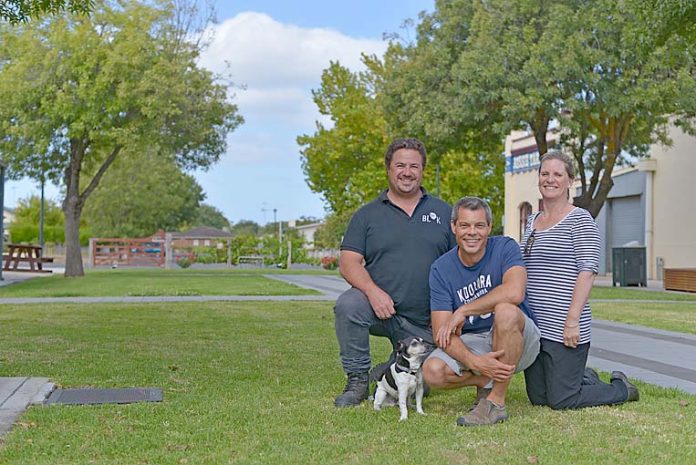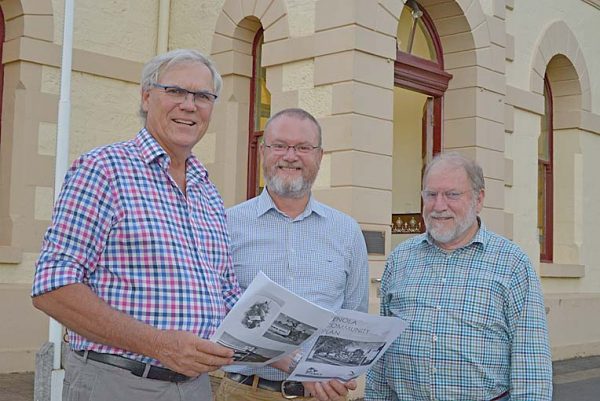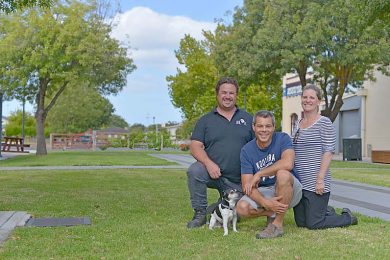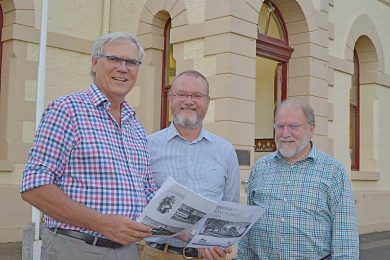

A COMMUNITY hub, a wetland walking trail and an avenue of trees linking the bypass to Penola were among ideas floated during last week’s Penola Community Town Plan meeting.
Around 40 community members attended the Wattle Range Council initiative last Wednesday to update the current 10-year plan given the looming completion of the long-awaited bypass project.
One of several meetings being called by council, the public forums aim to empower Wattle Range communities to drive their own individual strategic vision for their town and identify projects and initiatives to be progressed.
Improving livability, boosting tourism and using the bypass as an advantage to the town were among the hot topics discussed during the meeting.
Council chief executive Ben Gower kick-started discussion by stressing the importance of community input.
Mr Gower said council was committed to completing the town plan with ideas solely put forward and creating by the townspeople, without the interference of council.

Among the first ideas to be floated was by community member Wendy Hollick, who outlined the potential for a wetland walking trail for residents and tourists alike on the council-owned land in Gordon Street.
“The area is currently unused but I think it can be transformed into a beautiful space,” she said.
“I’d like council to look into making the area more accessible for people to walk through and maybe take their dogs.
“If it was possible, we could think about creating a wetland area with boardwalks, walking trails and seating.
“It could be accessed via Petticoat Lane which means visitors could walk from the centre of town to the area and explore more of our region.”
Councillor Rick Paltridge suggested planting an avenue of tress along the bypass after its completion to entice tourists into the town.
“We could plant around 170 trees along the western side of the bypass,” Mr Paltridge said.
“I think it is hard to go past the look of an avenue of trees, this could show visitors the amount of pride we take in our town and therefore entice them to turn in or return at a later date.
“Whether we use deciduous, native or evergreen trees is a matter to be decided by someone else, I think it is just important to ensure the trees do not over hang on the vineyards.”
The group also discussed the implementation of a community hub in the centre of town.
The hub would serve as a location for community groups, schools and event organisers to gather and discuss ideas in addition to a place to host events and meetings.
A computer area with internet access at the hub was put forward by Bill Murray.
Mr Murray said many elderly residents either do not have access to the internet or were not competent in using the technology.
He suggested an organisation such as ac.care could visit the town once a week or month to host computer literacy courses for those who need them.
“Most of these things have to be done online now and a lot of older people do not know how to use the internet,” he said.
“I had to renew my passport recently online and although I do use the internet, I am not completely confident and it was quite a task.
“If we had someone to teach people how these things operate I think it would be a great asset.”
The idea of youth retention was also discussed during the meeting with the issue of job availability the main concern.
Council planning officer Pete Whiting recalled an initiative used in a New Zealand town where the council purchased a mobile coffee van for youth to run over the period of a year.
The concept sees four or five young people employed who are responsible for the micro business.
“If we had something similar, or even four or five things similar, this would create jobs for a lot of youth in the area,” he said.
“It teaches them entrepreneurial skills which can then lead to them opening their own businesses within the community.
“Small ideas like this can be implemented to create larger change.”
Other ideas floated during the meeting included a bike path along the bypass, further signage around the town to direct visitors and more accessibility and parking for caravans close to the Mary MacKillop Interpretive Centre and the Visitor Information Centre.
At the end of the meeting council called for nominees to become part of the committee to create the new plan.









